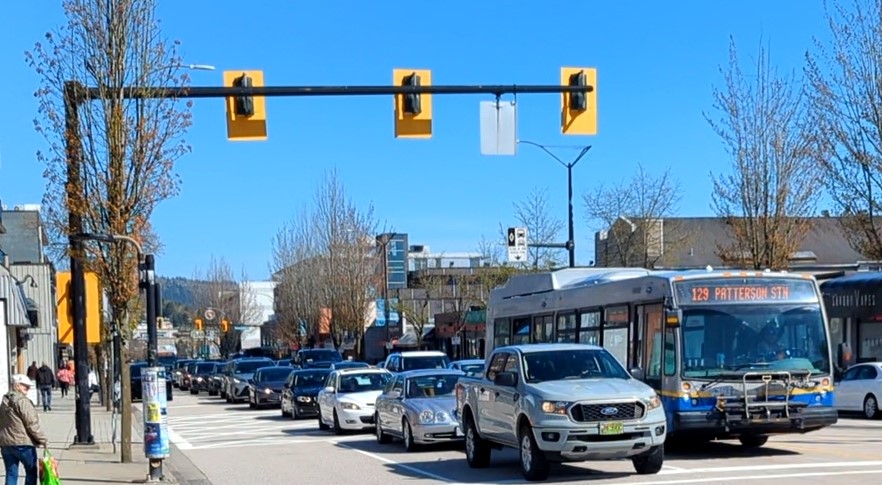Fire risk in B.C. still high as cooler temperatures, rain move in
Posted August 25, 2018 7:51 am.
Last Updated August 25, 2018 8:51 pm.
This article is more than 5 years old.
KAMLOOPS (NEWS 1130) – As the clouds and cooler temperatures move in, people are reminded to stay vigilant about the dry conditions that affect much of B.C.
Of the 551 wildfire currently burning, there are about 60 wildfires of note; fires that are either highly visible or potentially pose a threat to public safety.
“One of the main ones that we’re keeping an eye on right now would be the Alkali Lake wildfire,” explains Fire Information Officer Kyla Fraser with the B.C. Wildfire Service. “Earlier on this season we were talking about that fire, it caused evacuations of a town called Telegraph Creek.”
She says that fire has now merged with three others in the area — making it an estimated 118,000 hectares in size.
“Making it the biggest wildfire currently burning in B.C.,” Fraser adds.
Fighting a fire of this size is no easy feat. She says more than 150 firefighters were tasked with battling that blaze Friday, supported by several pieces of heavy equipment and helicopters.
“There also is an incident management team that’s working on that fire; they’re stationed in Dease Lake.”
Progress is being made, however the B.C. Wildfire Service says the fire situation is still quite severe. Fraser points to a number of different challenges across the province, like smoke. Crews continue to fight each blaze and prioritize their attacks while keeping public safety in mind.
“[There are] still many air quality advisories in effect, so that’s definitely something to keep in mind both in terms of flying our aircraft — we do have to ground them at times just because visibility is so poor, but it can also make detection of new wildfires difficult.”
If you’re heading into the backcountry this weekend and think you may have spotted a new wildfire, Fraser says it’s vital you report it to the service.
According to Fraser, all six fire centres are dealing with wildfires of note. Shovel Lake is currently the second largest wildfire burning in B.C. at around 91,000 hectares in size.
“Certainly in that kind of central, northern B.C. area, we’ve seen quite a lot of challenging fire behaviour and challenging weather conditions as well. So that’s definitely somewhere to keep our eye on.”
Fraser adds the southern interior, and the south east fire centre are also dealing with a number of fires at this moment.
There has been up to 842,000 hectares burned across B.C. so far this season.
With rain could come lightning
While rain is a welcomed help while fighting wildfires, there are still some realy concerns that come with it.
“Certainly the rain will hopefully provide a little bit of relief in terms of the overall fire situation,” Fraser says. “But, when we see that instability across the province, that can bring increased winds as well as an increased risk of lightning. So we’re hoping that if there are some areas that do see some lightning strikes, that will be accompanied by precipitation, and that we’re going to get some rain in those areas that need it the most.”
Preventable wildfires
The B.C. Wildfire Service says people were responsible for more than 400 fires so far this summer.
“Human-caused wildfires are always a concern because ultimately they’re entirely preventable,” Fraser adds. “Especially this year, we’re facing a lot of lightning-caused wildfires. So any of those human-caused wildfires divert resources that are critical and we really need to put towards those naturally-caused wildfires.”
There is also a campfire ban in effect for virtually the entire province, with some exceptions. The bans are in place “for very good reasons,” the B.C. Wildfire Service says, which is why it’s important everyone abide by restrictions.
For more information on the bans and how to prevent them, visit the B.C. Wildfire Service website.
SPCA shelter evacuations
It’s not just people who are being impacted by the raging wildfires across the province.
The SPCA says it’s been forced to evacuated at least four of its northern B.C. shelters due to the dangers posed by nearby fires.
Lorie Chortyk, the SPCA’s general manager of communications, says a number of animals have been taken to facilities in the Lower Mainland until the situation ameliorates in the northern communities.
“We’ve brought down about 130 animals in the last couple of weeks down to the Lower Mainland,” she explains. “So what we’ve done is we’ve moved the animals out of those shelters; they’ve gone to the Okanagan, to Vancouver Island, and then to the Metro Vancouver area, and many of those animals have already been adopted out.”
She adds some of the emergency shelters set up for residents displaced don’t allow pets and that’s forced families to leave their animals behind. The SPCA is lending support for these families.
“In Prince George we have our actual shelter — we’ve cleared that out — and that’s full of animals who’ve been displaced. Their families have brought them so we’re providing temporary shelter in all of our Prince George shelter, but we’re also operating a separate evacuation centre for displaced pets so we have about 80 dogs at that second centre as well.”
Families are able to drop their animals off at these facilities to be cared for until the situation clears up and they’re able to return home.
“We provide shelter, food, they get walked three times a day, and their families can come and visit with them during the day.”
-With files from the Canadian Press










